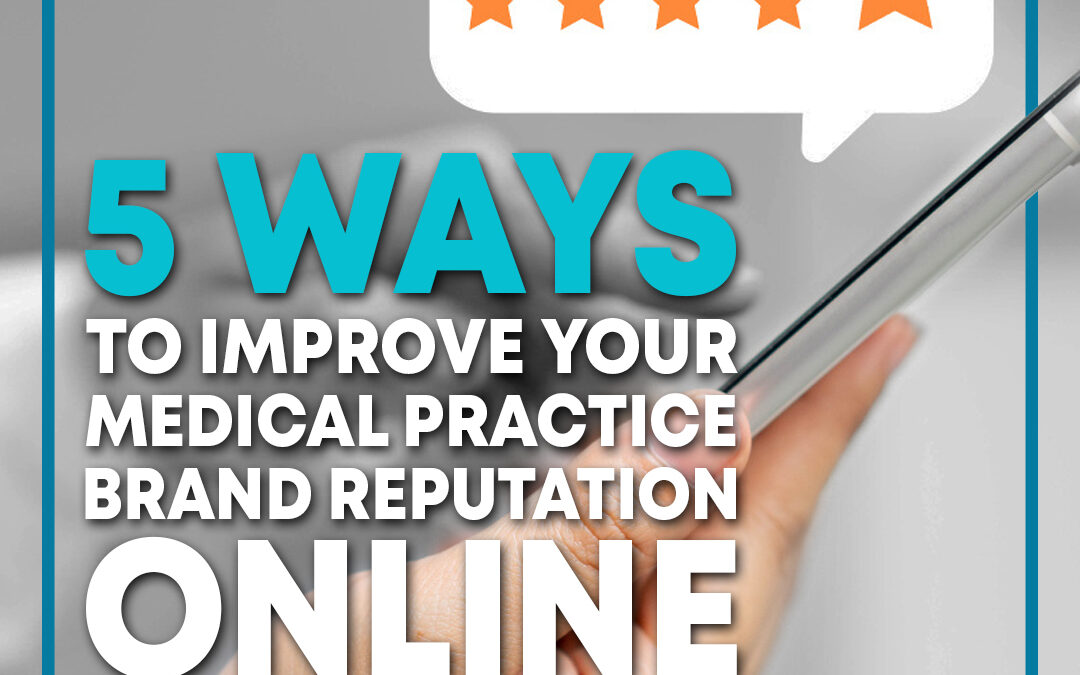Building a brand reputation isn’t as straightforward as it used to be. In the past, word-of-mouth referrals and advertising helped medical practices attract new patients and grow sustainably. Today, while word-of-mouth marketing is still valuable, medical practices are battling for brand awareness and customers in the digital landscape.
In a crowded industry where consumers have multiple options, cultivating and maintaining a positive, trustworthy brand reputation online is essential for attracting and retaining new patients. Otherwise, research-savvy consumers will find a different practice offering a better patient experience.
There’s no better time than now to take a close look at how your brand is perceived online. Keep reading to learn five steps your medical practice can take to improve your online reputation management.
1. Create New Content….Frequently
Creating high-quality, relevant content is one of the best ways to establish brand presence, credibility, authority, and trustworthiness online. Your content can be in the form of blogs, social media posts, videos, and infographics. Publishing content allows you to speak directly to your audience to address their pain points, provide education, show expertise, and demonstrate the unique value of your products and services. And regularly posting useful content on your website — like a blog — helps your practice rank higher on Google search results, thus expanding your brand reach.
2. Create Profiles on Online Directories
Increase your online presence by creating profiles for your clinic and physicians on medical directories like WebMD, Vitals, Healthgrades, ZocDoc, RateMDs, and others. These directories are valuable platforms where you can share information about your physicians and encourage patients to leave good reviews. Directory pages rank organically on Google when consumers are searching the web for primary care physicians, specialists, or specific health services in their area.
Just remember to monitor all your profiles so that you can respond to reviews and questions when they appear. And audit your directory profiles regularly to update information.
3. Proactively Monitor Review Sites
Your business should monitor all the places where patients can leave reviews about your practice or providers. That includes your website, Google, Yelp, social media, and the health care review sites listed above. Proactive monitoring ensures that you can respond promptly when someone leaves a new review online.
Acknowledging and responding to every review is an important part of reputation management — especially when it comes to negative reviews. There’s nothing more harmful you can do for your online reputation than to ignore negative reviews. Instead, use negative reviews and feedback as an opportunity to identify patient pain points and make changes to improve the patient experience.
And remember that patients will not only be watching to see if you address negative reviews — they’ll also be evaluating how your team responds to negative feedback. Confronting or aggressively disputing an unhappy patient online is a sure way to tank your credibility and trustworthiness.
Instead, engage respectfully and kindly with unsatisfied patients. Showcase a desire to listen to their issues and find a way to resolve them — and then follow through on making the promised changes. By managing negative reviews with excellent customer service and a willingness to improve, you could turn former detractors into brand supporters.
4. Optimize Google My Business (GMB)
Having a Google My Business (GMB) profile is crucial for your business to appear in Google Maps and local search results. A verified GMB listing is a credible and trustworthy source of information for consumers searching the web. Make sure that users find what they’re looking for by optimizing your profile with the following information:
- Name
- Description and services
- Contact information
- Website link
- Reviews
Simply having a visible profile with your practice’s information available at a glance can go a long way toward attracting more click-throughs to your website to learn more.
5. Ask for Reviews
Patient reviews are one of the most important components for building a strong, positive presence online. One survey found that 71% of patients use online reviews as the very first step to finding a new doctor. However, many doctors and staff feel uncomfortable asking patients to leave a good review, even after a satisfactory experience. Why? Because there’s a social stigma that it’s poor form to ask for a review outright.
But the truth is that there’s no harm in asking patients to leave a positive review of your practice. In fact, because many patients use online reviews as part of the decision-making process when choosing a new provider, they already know how important reviews are to your business. Additionally, writing online reviews is commonplace these days — chances are, your patients have written reviews for other businesses and would be happy to write one for you as well.
The next time you receive a compliment or good feedback from a satisfied patient, use that as a lead-in to asking for a review. You might be surprised at the results a simple ask can achieve — one survey found that 72% of customers who were asked to leave a review for a business did so.
Work With NewGen Marketing to Improve Your Online Reputation
The NewGen Marketing team has years of experience driving sales and business growth for industry-leading health care brands. We recognize the value of integrating multi-channel marketing campaigns with a proven acquisition and nurturing process that leads to patient conversions and treatments.
We provide broad-spectrum medical marketing services, including strategy and investment, analytics, paid media, social media, remarketing, content marketing, and acquisition and call centers. When you’re ready to hire a marketing agency who can drive more to your bottom line, contact NewGen Marketing for a free consultation.

